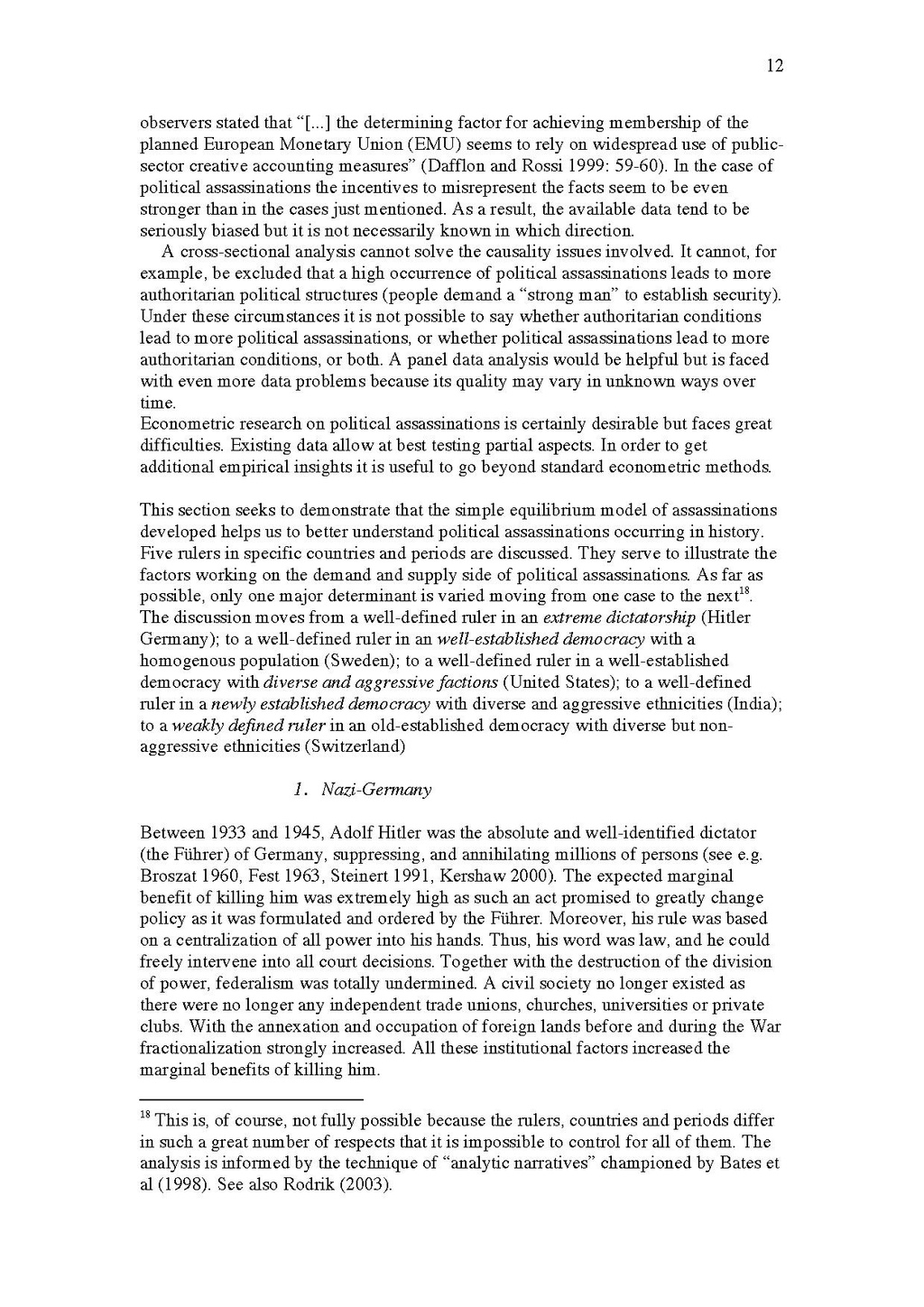observers stated that “[...] the determining factor for achieving membership of the
planned European Monetary Union (EMU) seems to rely on widespread use of public-
sector creative accounting measures” (Dafflon and Rossi 1999: 59-60). In the case of
political assassinations the incentives to misrepresent the facts seem to be even
stronger than in the cases just mentioned. As a result, the available data tend to be
seriously biased but it is not necessarily known in which direction.
A cross-sectional analysis cannot solve the causality issues involved. It cannot, for
example, be excluded that a high occurrence of political assassinations leads to more
authoritarian political structures (people demand a “strong man” to establish security).
Under these circumstances it is not possible to say whether authoritarian conditions
lead to more political assassinations, or whether political assassinations lead to more
authoritarian conditions, or both. A panel data analysis would be helpfUL but is faced
with even more data problems because its quality may vary in unknown ways over
time.
Econometric research on political assassinations is certainly desirable but faces great
difficulties. Existing data allow at best testing partial aspects. In order to get
additional empirical insights it is usefUL to go beyond standard econometric methods.
This section seeks to demonstrate that the simple equilibrium model of assassinations
developed helps us to better understand political assassinations occurring in history.
Five rulers in specific countries and periods are discussed. They serve to illustrate the
factors working on the demand and supply side of political assassinations. As far as
possible, only one major determinant is varied moving from one case to the next18.
The discussion moves from a well-defined ruler in an extreme dictatorship (Hitler
Germany); to a well-defined ruler in an well-established democracy with a
homogenous population (Sweden); to a well-defined ruler in a well-established
democracy with diverse and aggressive factions (United States); to a well-defined
ruler in a newly established democracy with diverse and aggressive ethnicities (India);
to a weakly defined ruler in an old-established democracy with diverse but non-
aggressive ethnicities (Switzerland)
Between 1933 and 1945, Adolf Hitler was the absolute and well-identified dictator
(the Führer) of Germany, suppressing, and annihilating millions of persons (see e.g.
Broszat 1960, Fest 1963, Steinert 1991, Kershaw 2000). The expected marginal
benefit of killing him was extremely high as such an act promised to greatly change
policy as it was formulated and ordered by the Führer. Moreover, his rule was based
on a centralization of all power into his hands. Thus, his word was law, and he could
freely intervene into all court decisions. Together with the destruction of the division
of power, federalism was totally undermined. A civil society no longer existed as
there were no longer any independent trade unions, churches, universities or private
clubs. With the annexation and occupation of foreign lands before and during the War
fractionalization strongly increased. All these institutional factors increased the
marginal benefits of killing him.
18 This is, of course, not fully possible because the rulers, countries and periods differ
in such a great number of respects that it is impossible to control for all of them. The
analysis is informed by the technique of “analytic narratives” championed by Bates et
al (1998). See also Rodrik (2003).
1. Nazi-Germany
